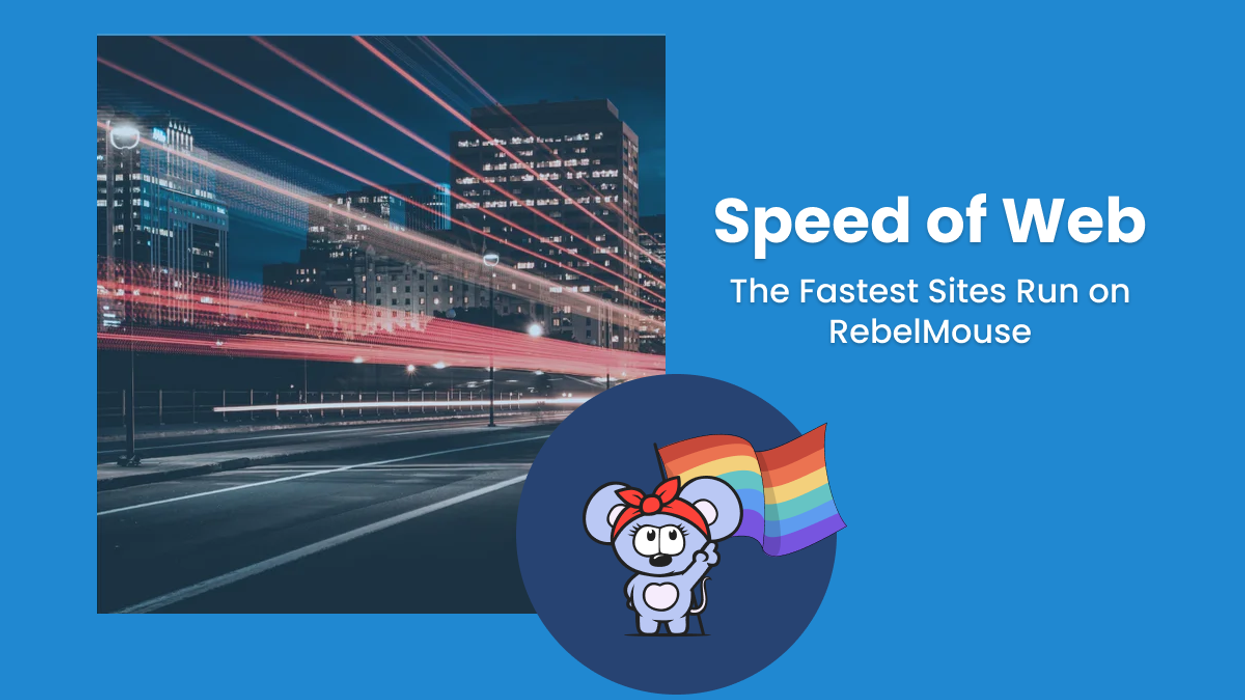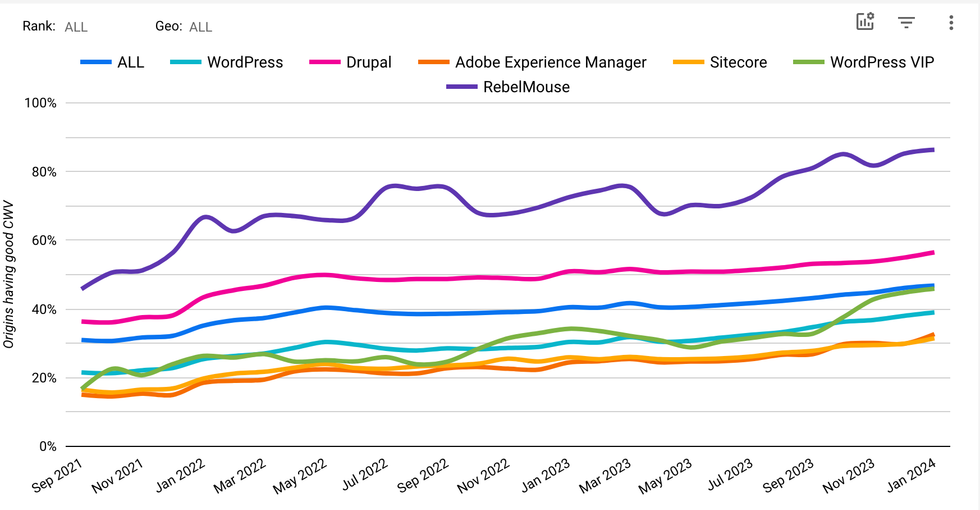In the spring of 2020, Google let the world know that its Core Web Vitals would become the new benchmark for measuring a site's performance in its search results, known as the page experience update. Fast forward to more than a year later in August 2021 when, after much anticipation, Google's page experience update became official.
Since its rollout, developers have felt the impact of how their publishing platforms stack up against the new standard. Important decisions around the architecture of your site can now make or break your site's performance in the eyes of Google.
HTTP Archive, a tracking platform that crawls the web to identify trends and record historical patterns, frequently reports on how top content management systems (CMS) have weathered the page experience update through the creation of its Core Web Vitals Technology Report. RebelMouse has consistently outperformed major CMS platforms on Google's most critical metrics throughout the years.
Getting superior scores on Google's performance benchmarks isn't easy, either. The Ahrefs blog analyzed Core Web Vitals data from the Chrome User Experience Report (CrUX), which is data from actual Chrome users, to see how the web stacks up against Core Web Vitals. Their study found that only 33% of sites on the web are passing Core Web Vitals.
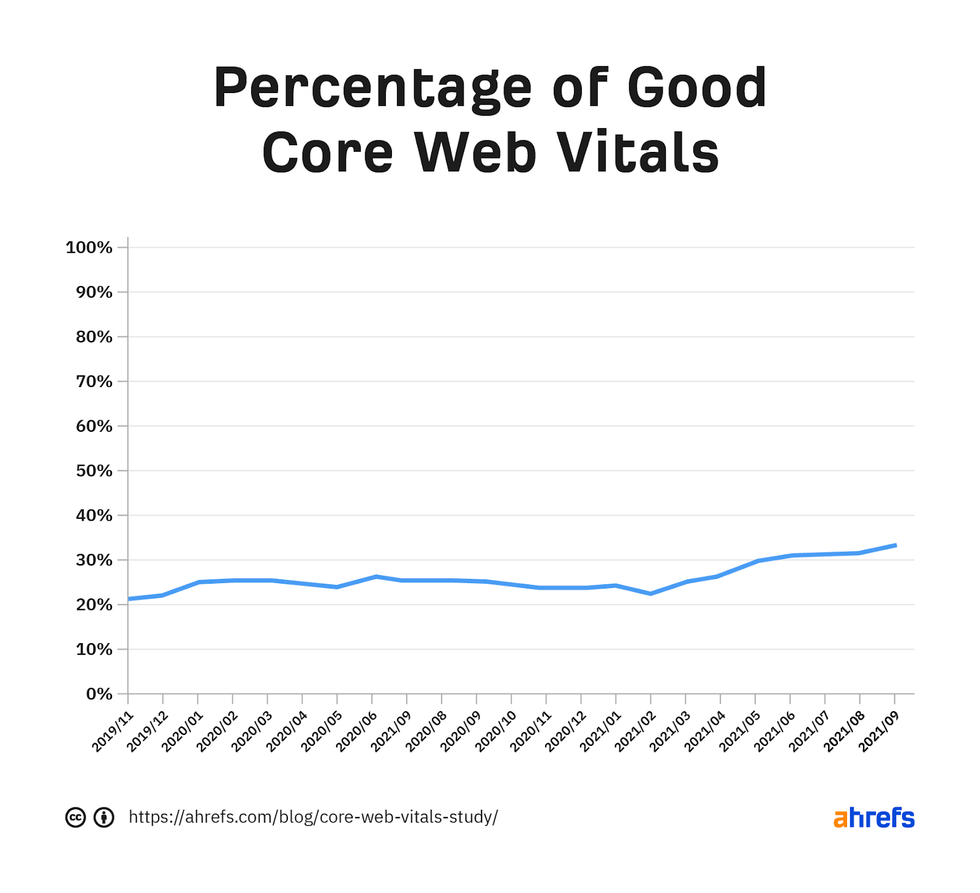
Luckily, performing well on Core Web Vitals is possible with thoughtful, strategic changes to your site’s codebase. Here's what you need to know and how we can help.
Don't lose users to a sluggish website. Publish with the need for speed.
Click HereYour Guide to Conquering Core Web Vitals in 2024
Understanding Core Web Vitals
First, it’s important to understand the metrics that make up Google’s Core Web Vitals:
- Largest Contentful Paint (LCP): A website's LCP is the time it takes to load the main content on a page. Google wants LCP to happen within 2.5 seconds of when a page first starts loading.
- First Input Delay (FID): FID quantifies a user's experience when trying to interact with unresponsive pages. This usually occurs between First Meaningful Paint (FMP) and Time to Interactive (TTI) (more on what these two mean can be found below). You want your FID score to be low to prove the usability of your site. According to Google, pages should have an FID of less than 100 milliseconds.
- Interaction to Next Paint (INP): Interaction to Next Paint (INP) takes an overall measurement of how quickly a website responds to interactions by a user. Think of an interaction as anything that a user can do on a website, whether it’s tapping an element on a touch screen or pressing a key on a keyboard.
The other existing search signals are:
- Mobile Friendliness: Follow Google's mobile-friendly guidelines to find out if your site meets its mobile experience standards.
- Safe Browsing: Google's Safe Browsing is a service where you can test your site's URLs for malware and suspicious activity.
- HTTPS Security: This determines if your site uses an HTTPS connection by default, which helps ensure site security.
- Intrusive Interstitial Guidelines: These guidelines determine if a site is mobile-friendly enough to appear in mobile search results. Note that any content that follows Google News’s content policies will be eligible to appear in Google News's Top Stories on mobile.
Together, all of these metrics determine Google's new page experience signals.
Google says it will always consider informative, quality content as its number one search signal. However, if two websites both have quality content, but one site has better Core Web Vitals, the site with a better page experience will always outrank any site that isn’t optimized for performance.
"By adding page experience to the hundreds of signals that Google considers when ranking search results, we aim to help people more easily access the information and web pages they’re looking for, and support site owners in providing an experience users enjoy.” —From Google’s original page experience announcement in May 2020.
Click here to learn more about what it takes to improve your site’s Core Web Vitals.
How to Measure Your Site’s Page Speed
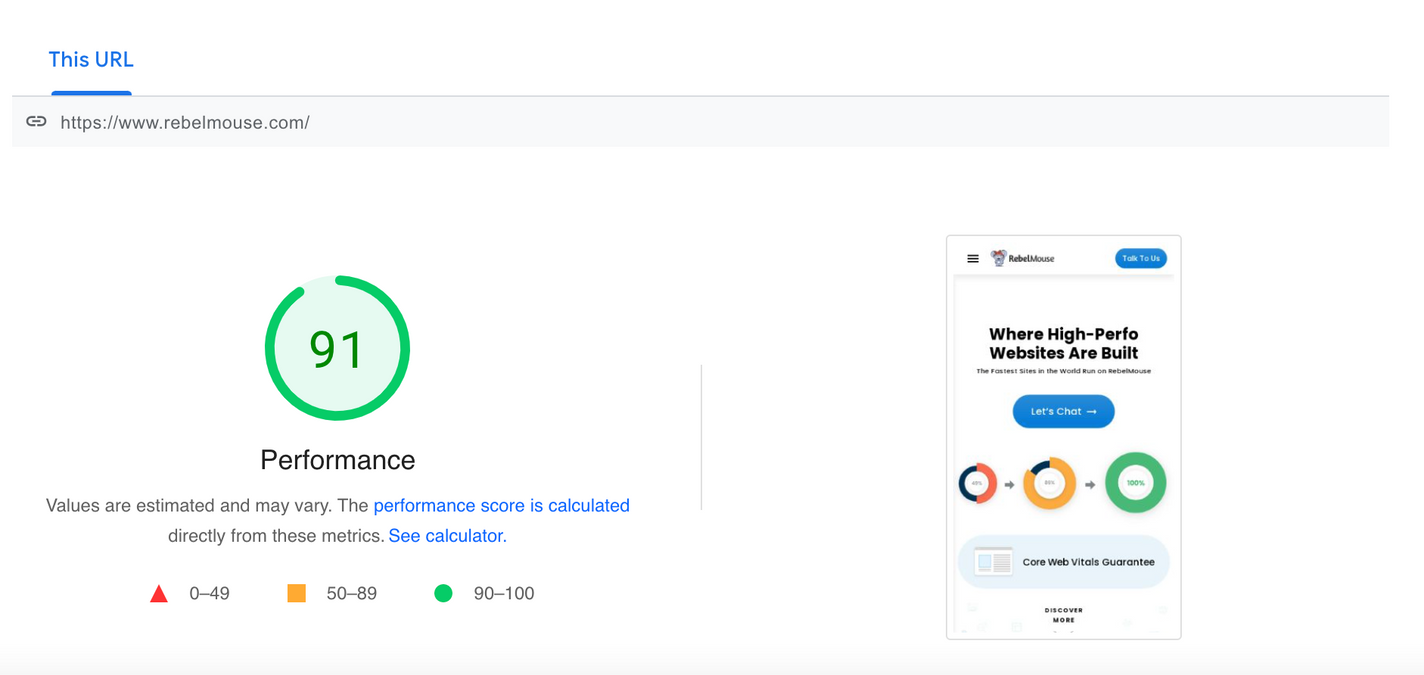
Having a quick load time and passing Core Web Vitals are important factors in Google Search’s ranking and results. But there are multiple ways of testing your speed and vitals, and it can get very confusing to try and understand the results since different measuring tools can result in different scores.
There are generally three ways to get your site's performance measurements:
- Use Google's PageSpeed Insights tool
- Use Google Lighthouse's scoring from within developers tools in Chrome
- Examine your Page Experience and Core Web Vitals in Google Search Console
Each of those three methods can give you important details on how your site is performing, but their results are derived using different methodologies.
Click here to learn more about how to accurately determine your site’s performance.
Why Page Speed Matters More Than Ever
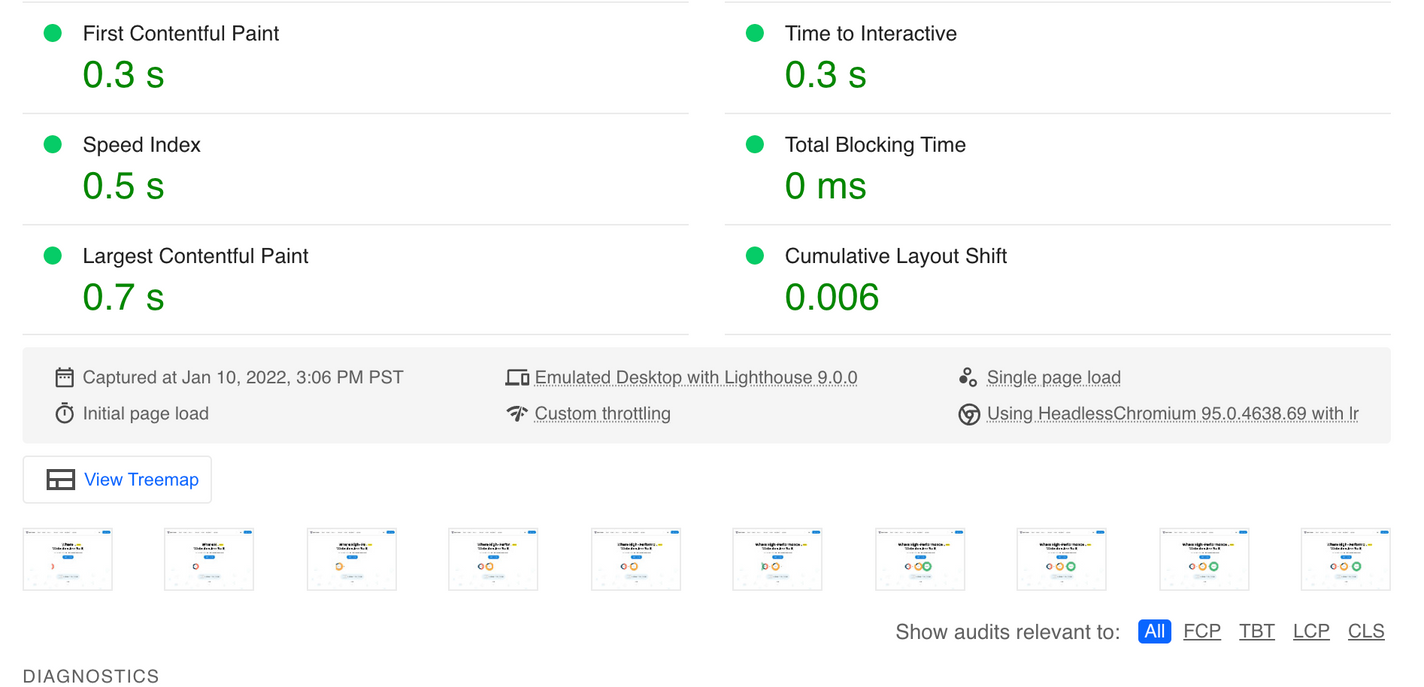
The saying "Content is King" is still true in today's publishing landscape, but there's no kingdom without high-performing sites. While page speed may have begun as a luxury for savvy webmasters and lucky readers, it's now a make-or-break component that deeply impacts a site's longevity in a highly competitive and global space.
A high-performance site is so critical in today's digital ecosystem that a poor-loading site could be a fatal blow to any publisher or brand. Here are just a few ways poor page speed can impact your site’s bottom line.
Mobile Page Speed Impacts Overall SEO Ranking: Mobile devices account for more than 50% of web traffic. If a site's mobile page speed is slow, this means half of the users trying to access the site are not only suffering a poor experience, but they're likely abandoning the site visit completely. This puts the site in danger of losing positions in its Google Search rankings.
Poor Page Speed Makes Ads More Expensive: Much like with SEO, if your page performance is slow and prompting lost site visits, the ads being served on your site will receive lower impressions. Lower impressions mean the ads are more expensive to deliver, which costs revenue and users in a matter of seconds.
Poor Page Speed Tanks Usability and Loyalty: The health of your site will always be dependent on the experience you deliver to your readers. Usability is the core reason why Google decided to prioritize page speed. Slow load times are a sure-fire way to give your readers a reason to abandon your content. To make matters worse, thanks to the massive amount of content being created every day, users have plenty of other options to choose from and may be wary of clicking a link or CTA associated with your site in the future.
Secure Your Site's Future
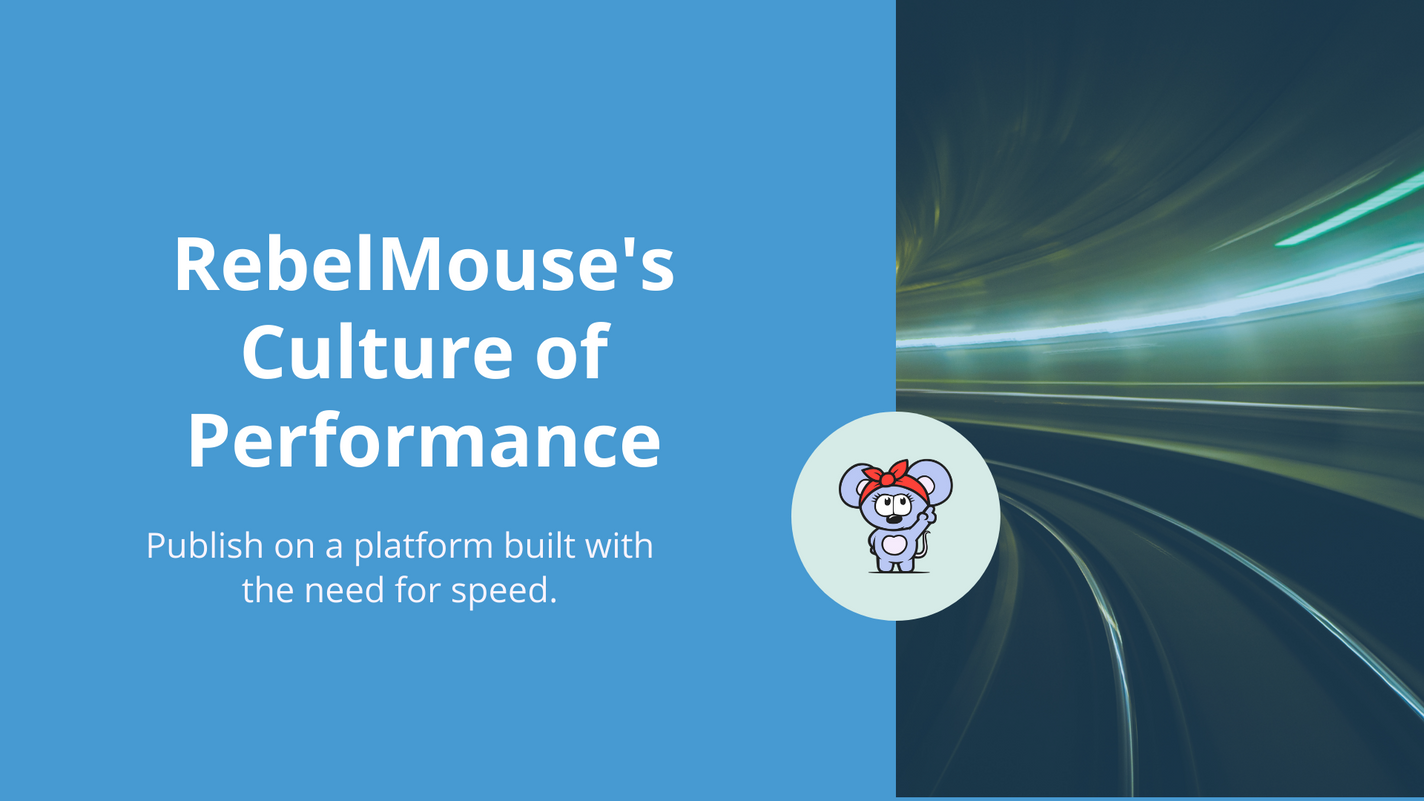
The RebelMouse platform evolves alongside Google’s algorithm, and our team of growth experts spans all time zones to ensure our sites are optimized for page experience with every new article.
To do this correctly, it takes a lot of optimization to perfect every moment of your site’s load time. We’ve mastered Core Web Vitals already, and our performance scores are drastically outperforming every other CMS on the market.
Our jaw-dropping page speeds have allowed us to power the fastest sites on the web. We’ve done this through a simplified version of code that still allows for ads, videos, and third-party applications to load quickly.
Now that you’re up to speed (pun intended) on how Google measures and scrutinizes site experience, let's take a look at some of the benefits RebelMouse-powered clients enjoy as a result of their excellent performance scores:
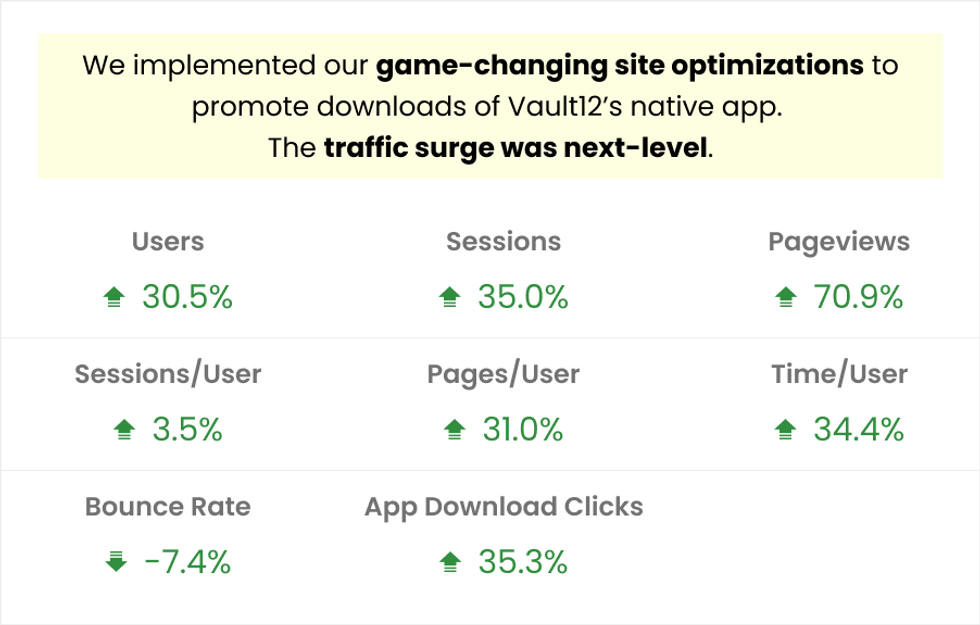
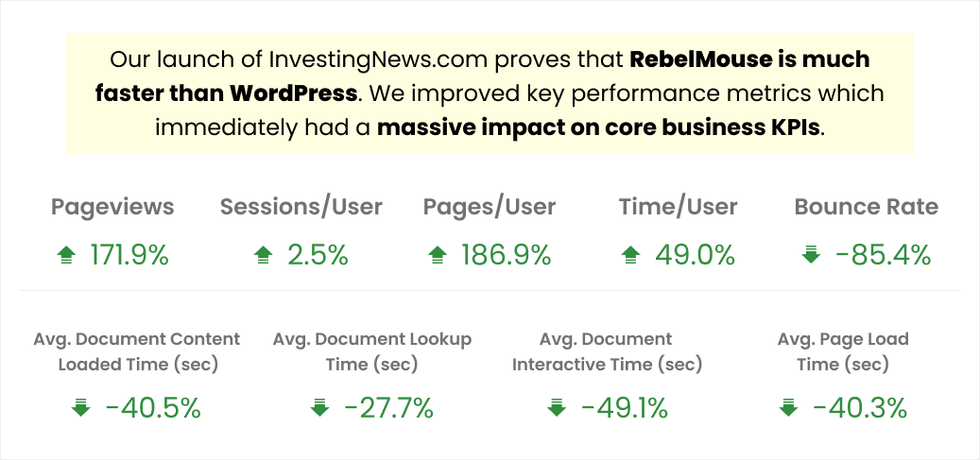
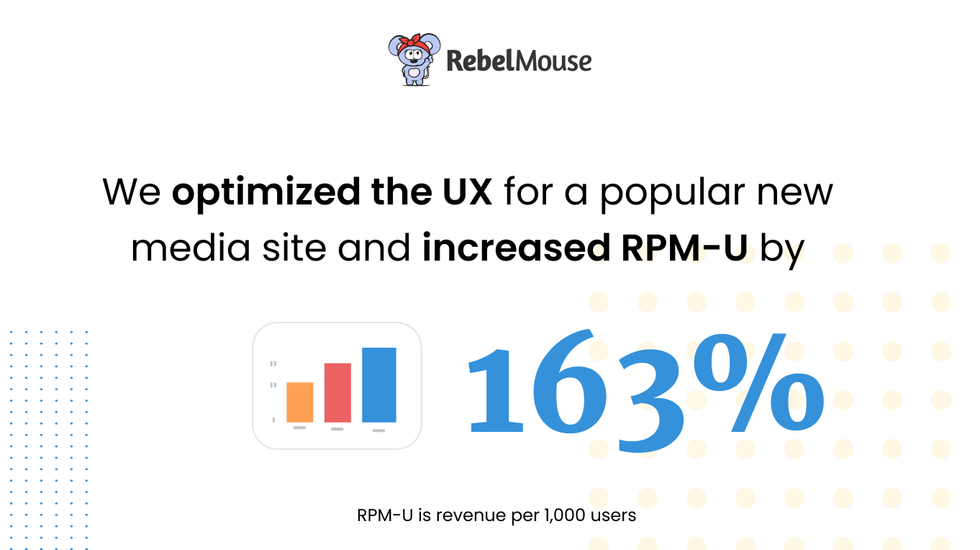

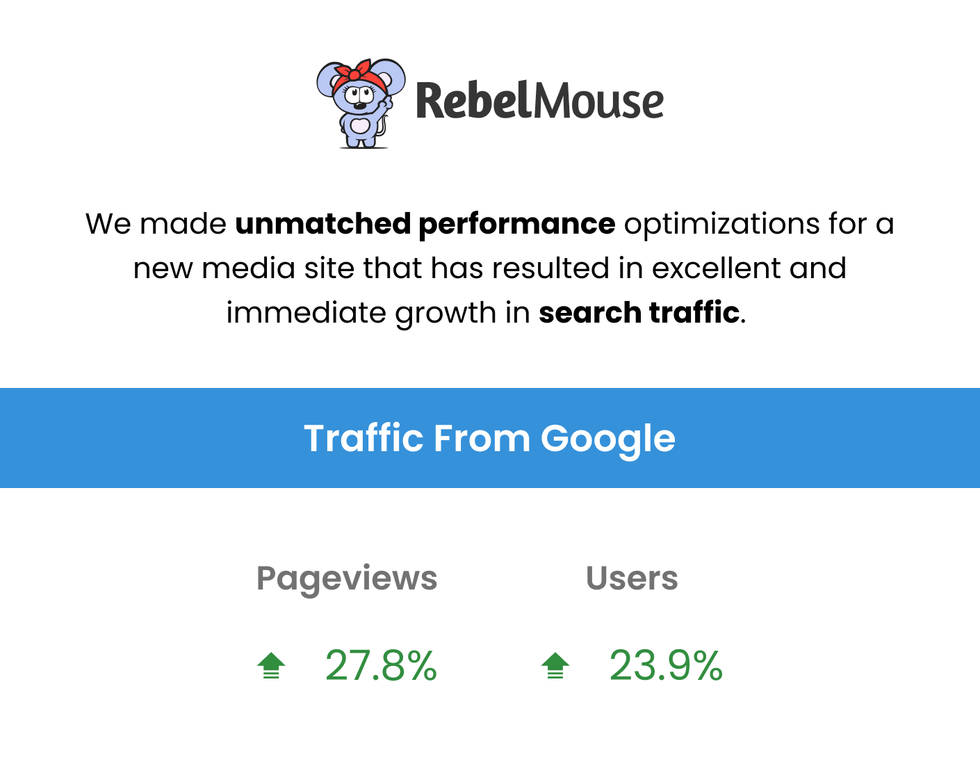
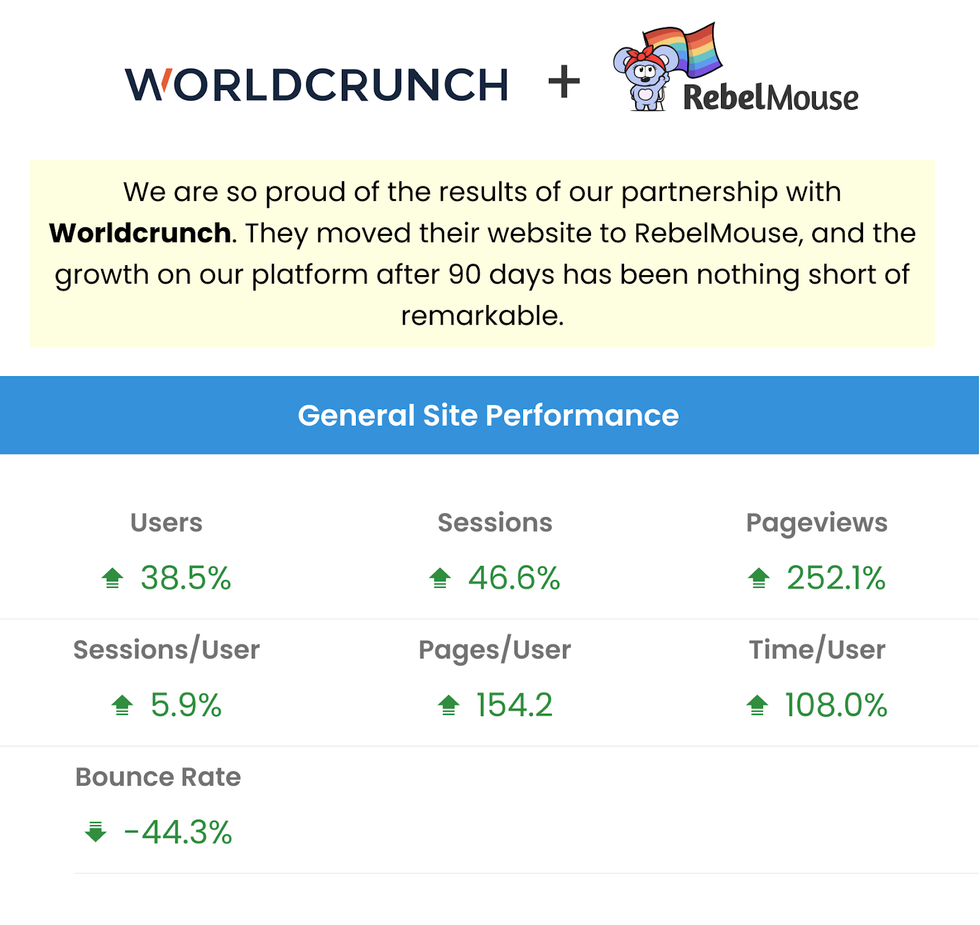
Here’s how those scores compare to traditional CMS solutions that don’t prioritize page performance:
It’s Easier to Re-Platform Than Rebuild Your Website
Currently, publishers are trying to build optimized websites that translate easily across devices and platforms, but are failing to also deliver an experience that checks all their boxes and prioritizes their readers. It takes less than a second of delayed load time to turn away a user.
If you are publishing to a site with poor performance, it’s going to take a mammoth effort to overhaul your site’s entire architecture so that it scores high against Google’s Core Web Vitals. In most cases, it’s simply easier and more cost-effective to move your data to a platform that is already high performing with page speed woven into the foundation of its technology versus reinventing the wheel on your own.
At RebelMouse, performance is a pillar of our company’s culture. We’ve taken site performance seriously for years, and have leveraged them to ensure our sites are constantly high performing. It's why we outperform some of the biggest sites on the web. And like with any pillar of a company's culture, optimizing for high performance is never a one-time effort. Our engineers have been crafting and tuning our platform to address these new standards long before they surfaced.
If you want to publish alongside the speed of the web, request a proposal today and let’s start working together.
